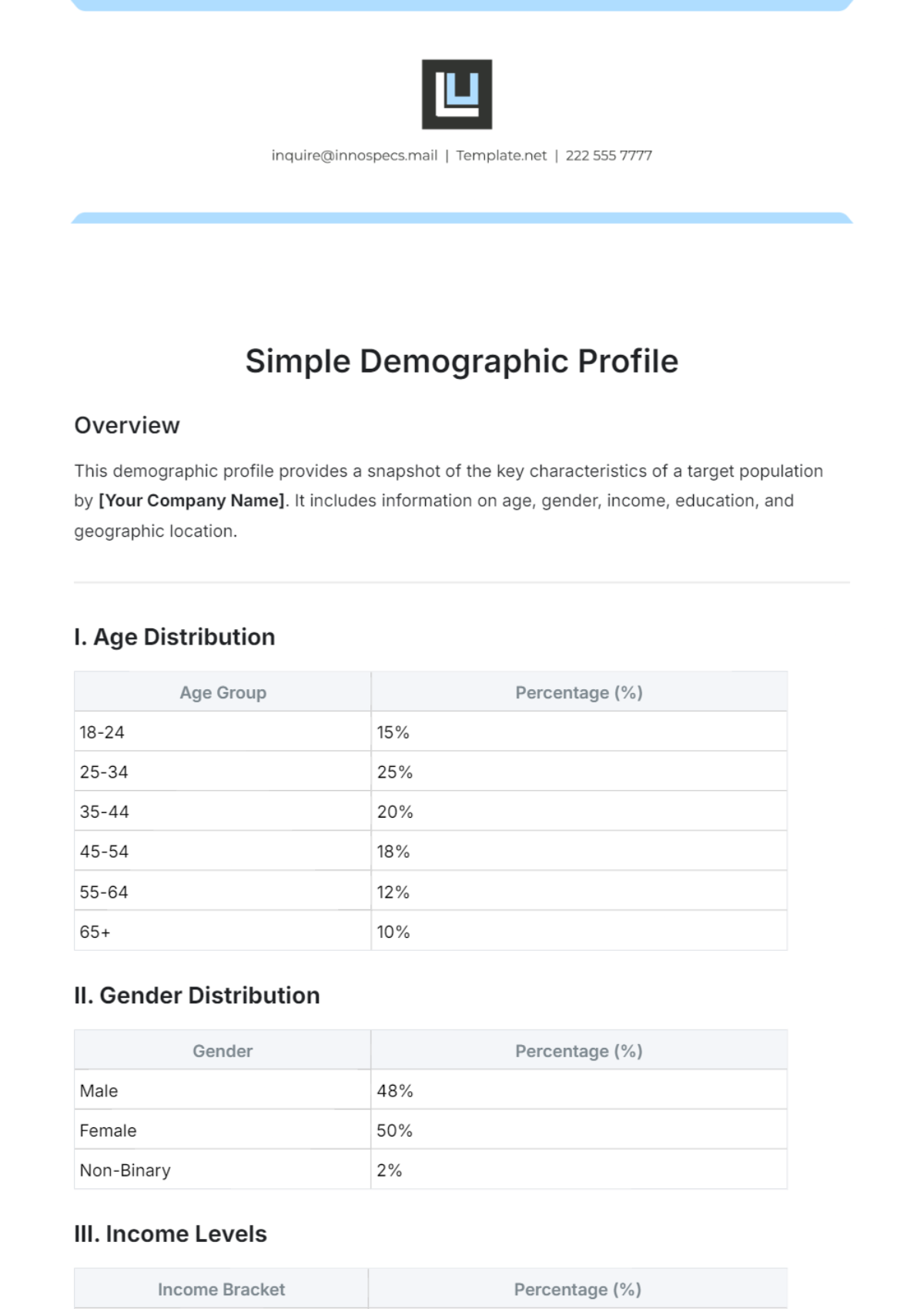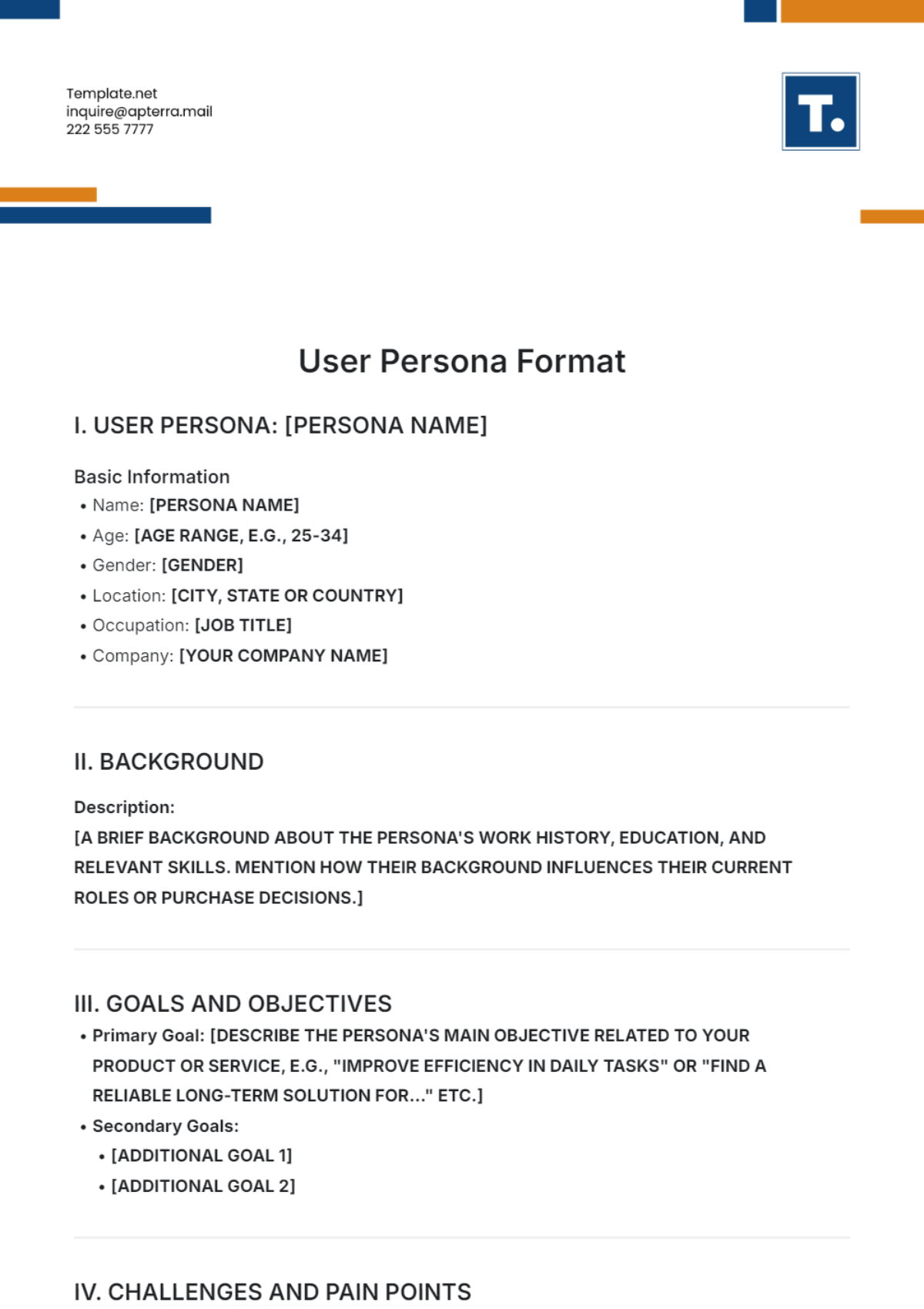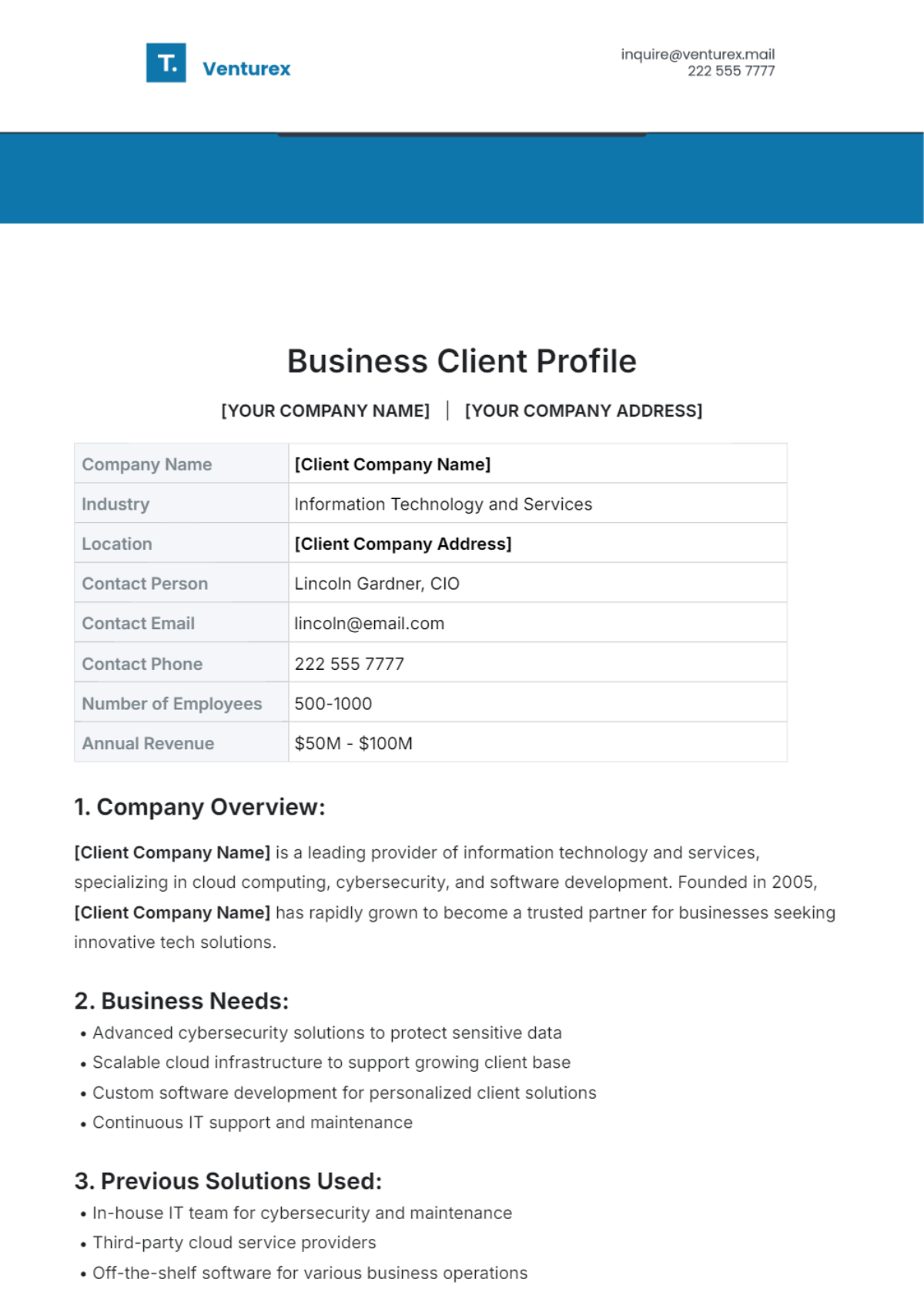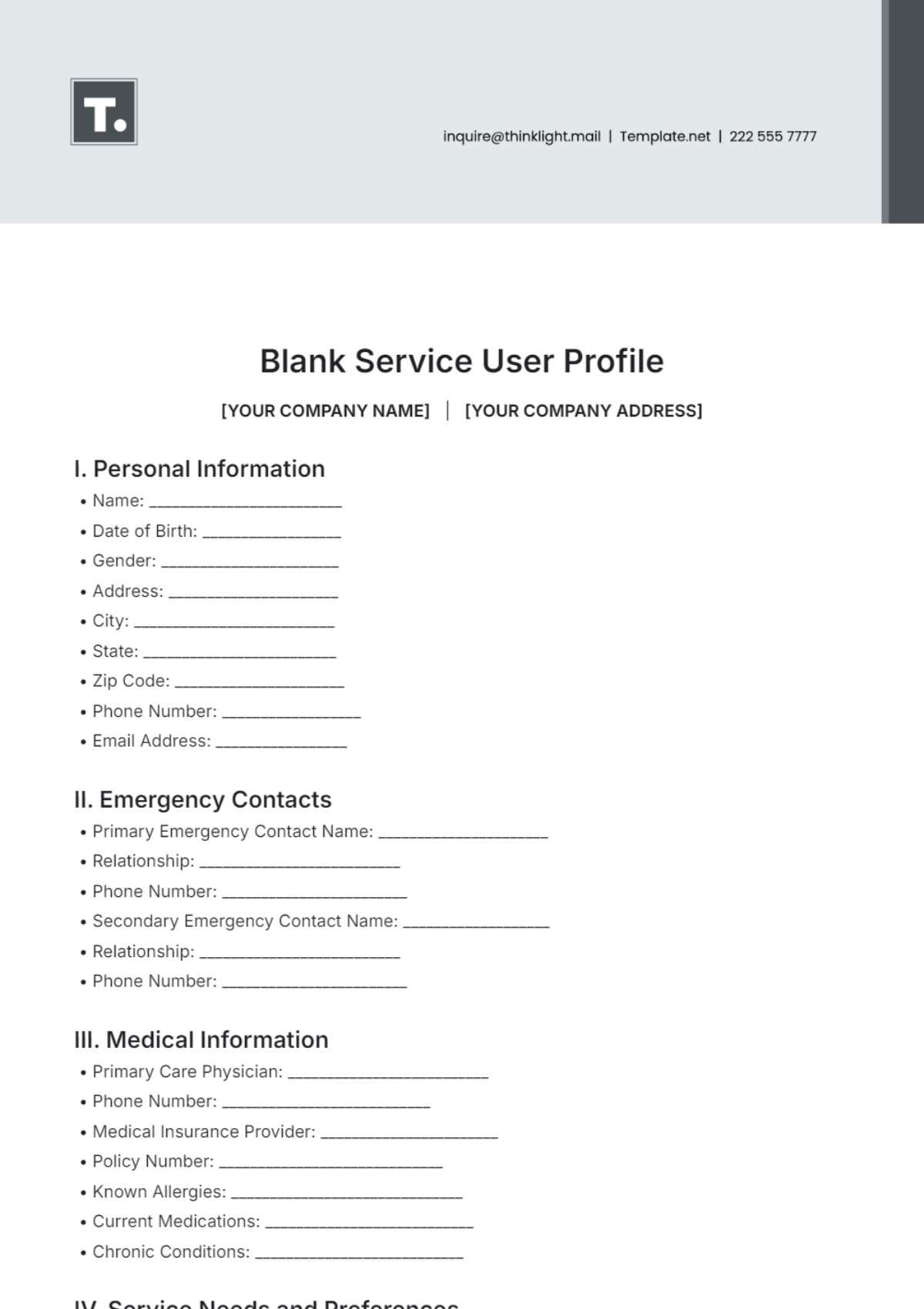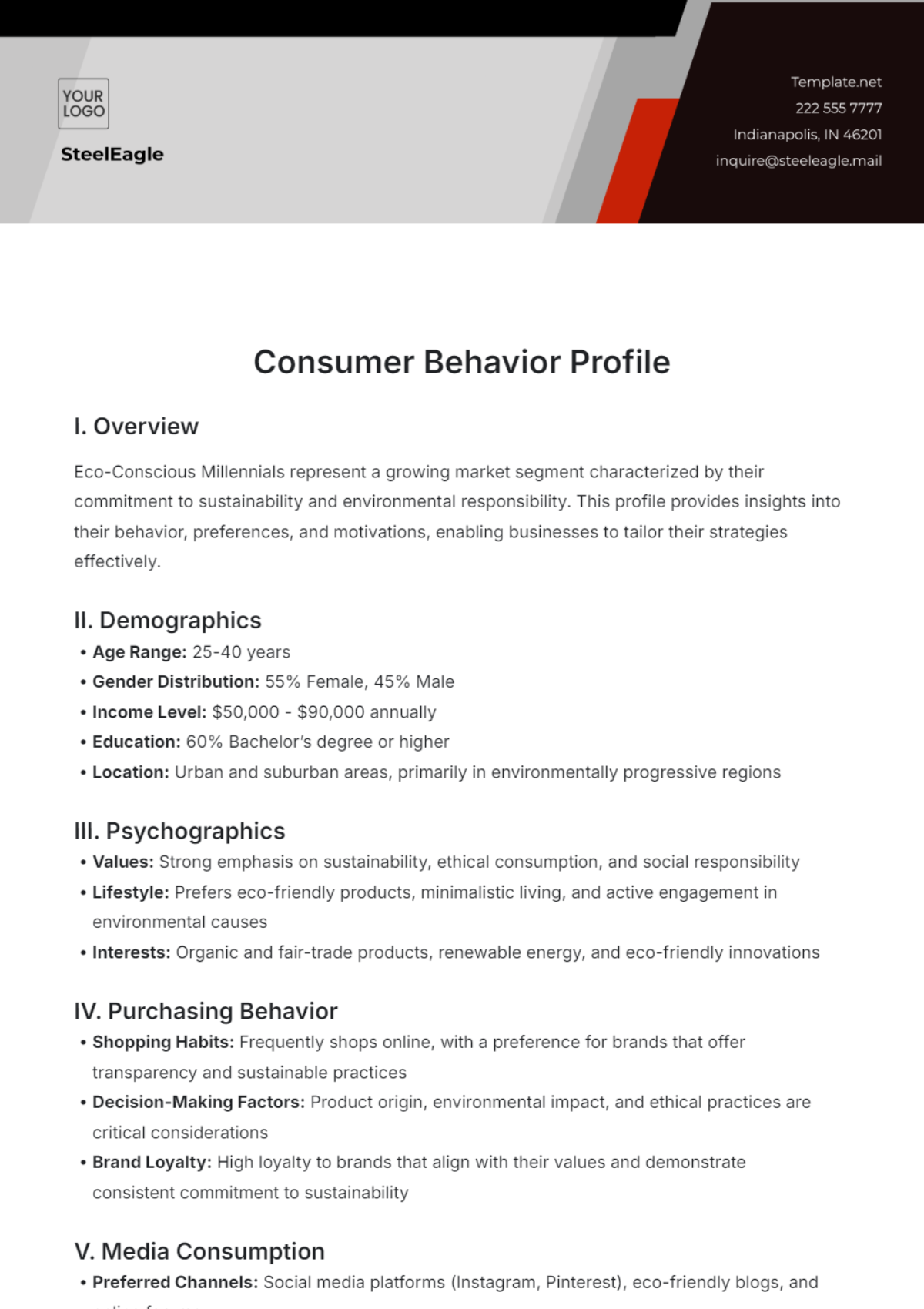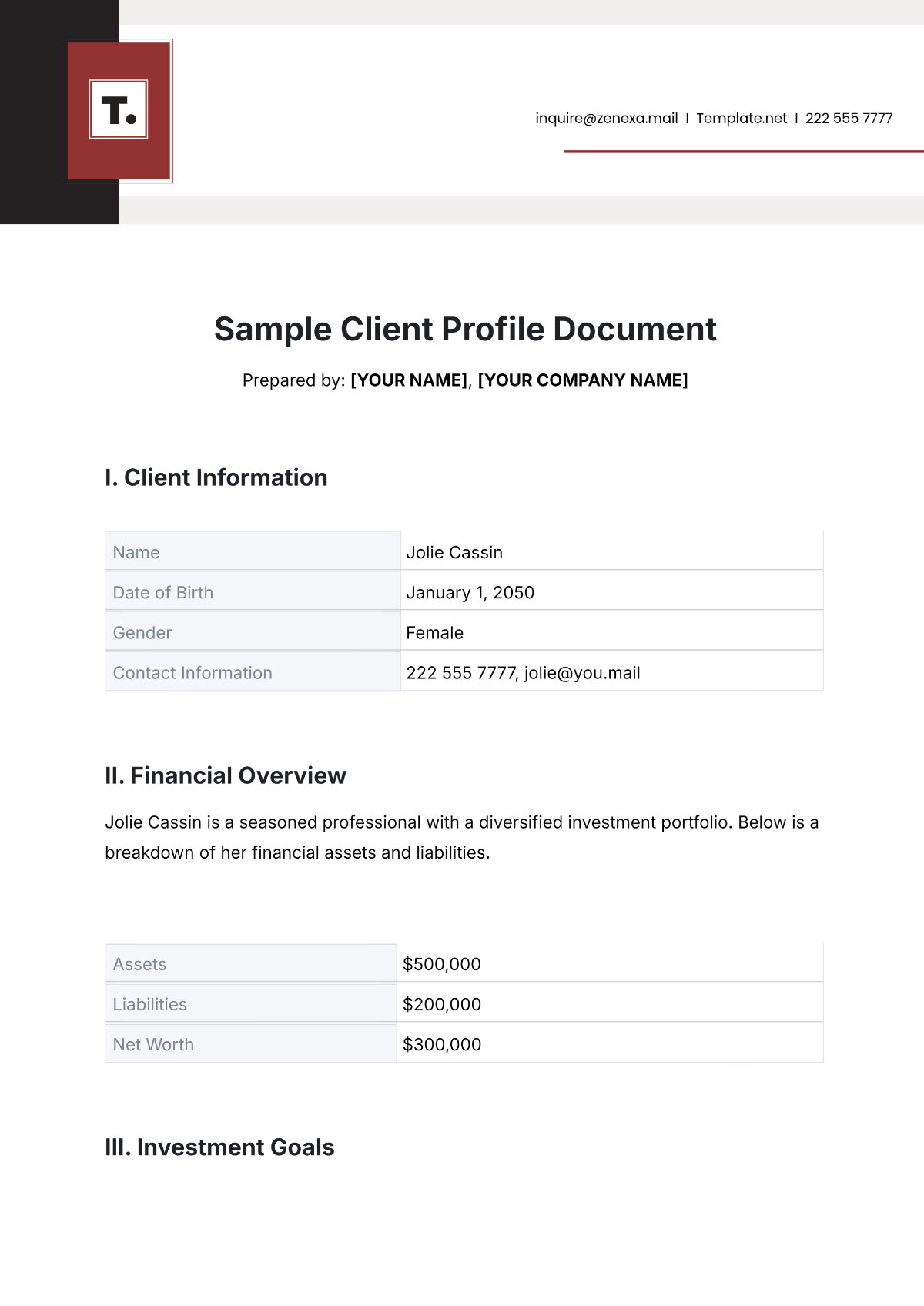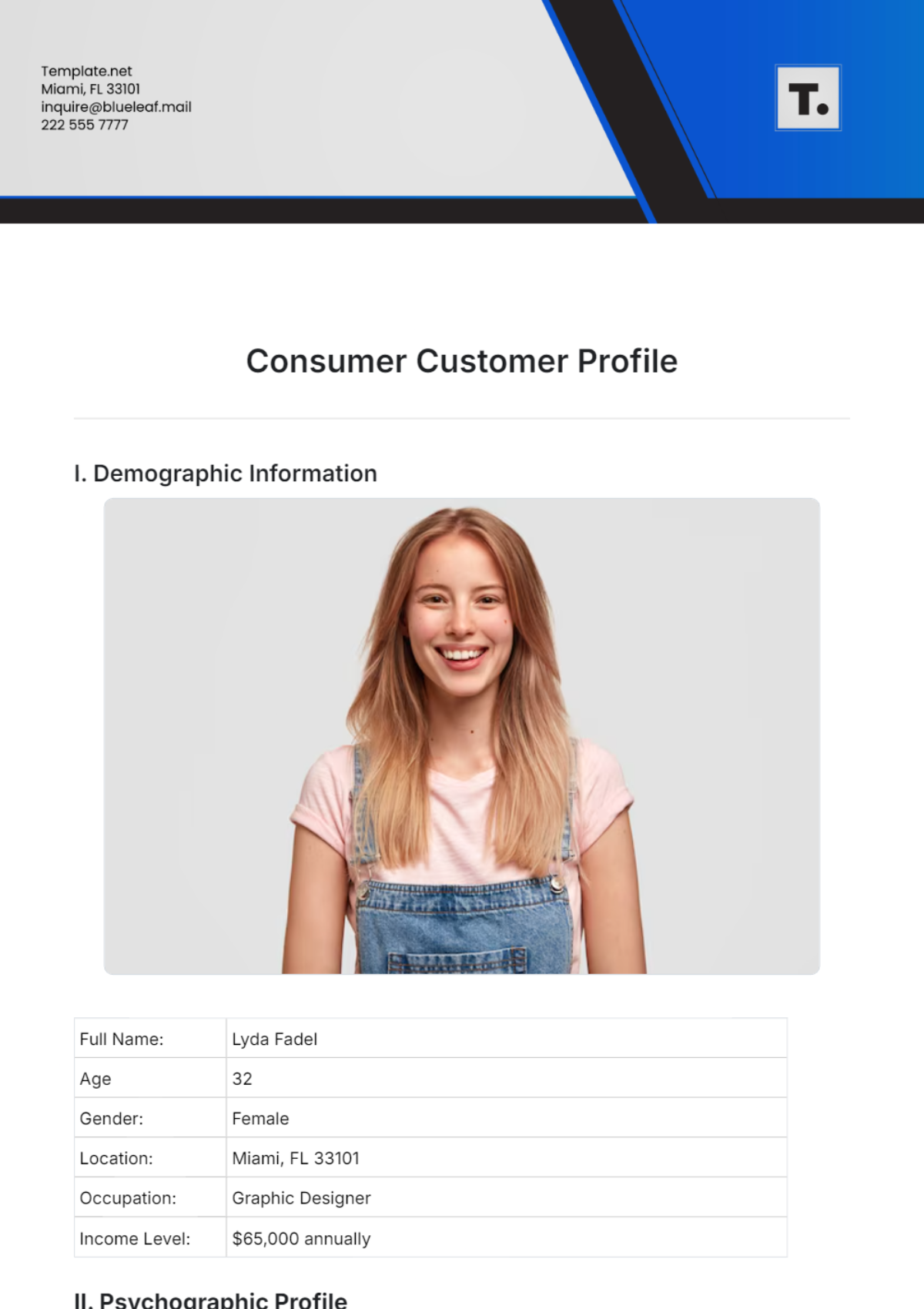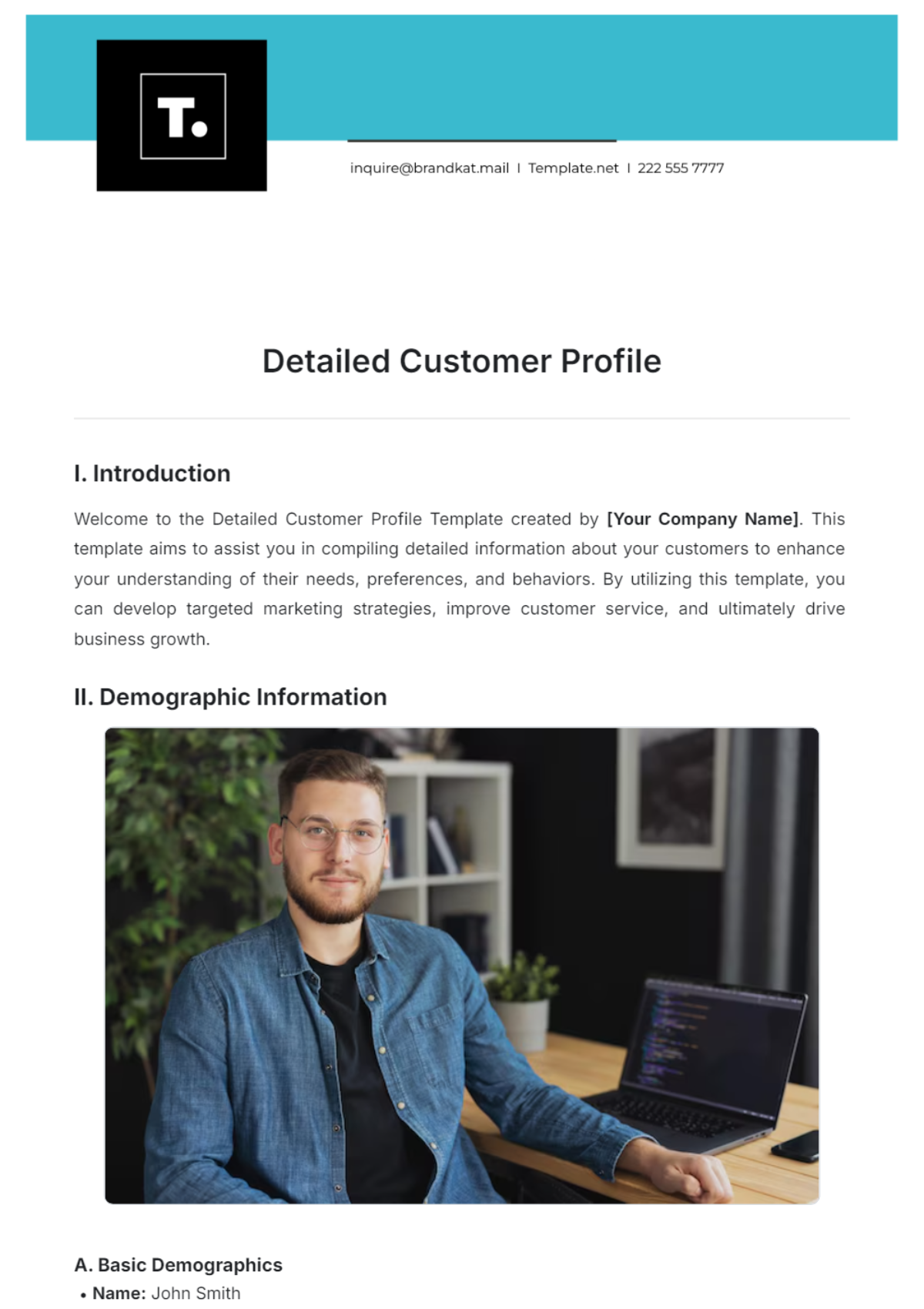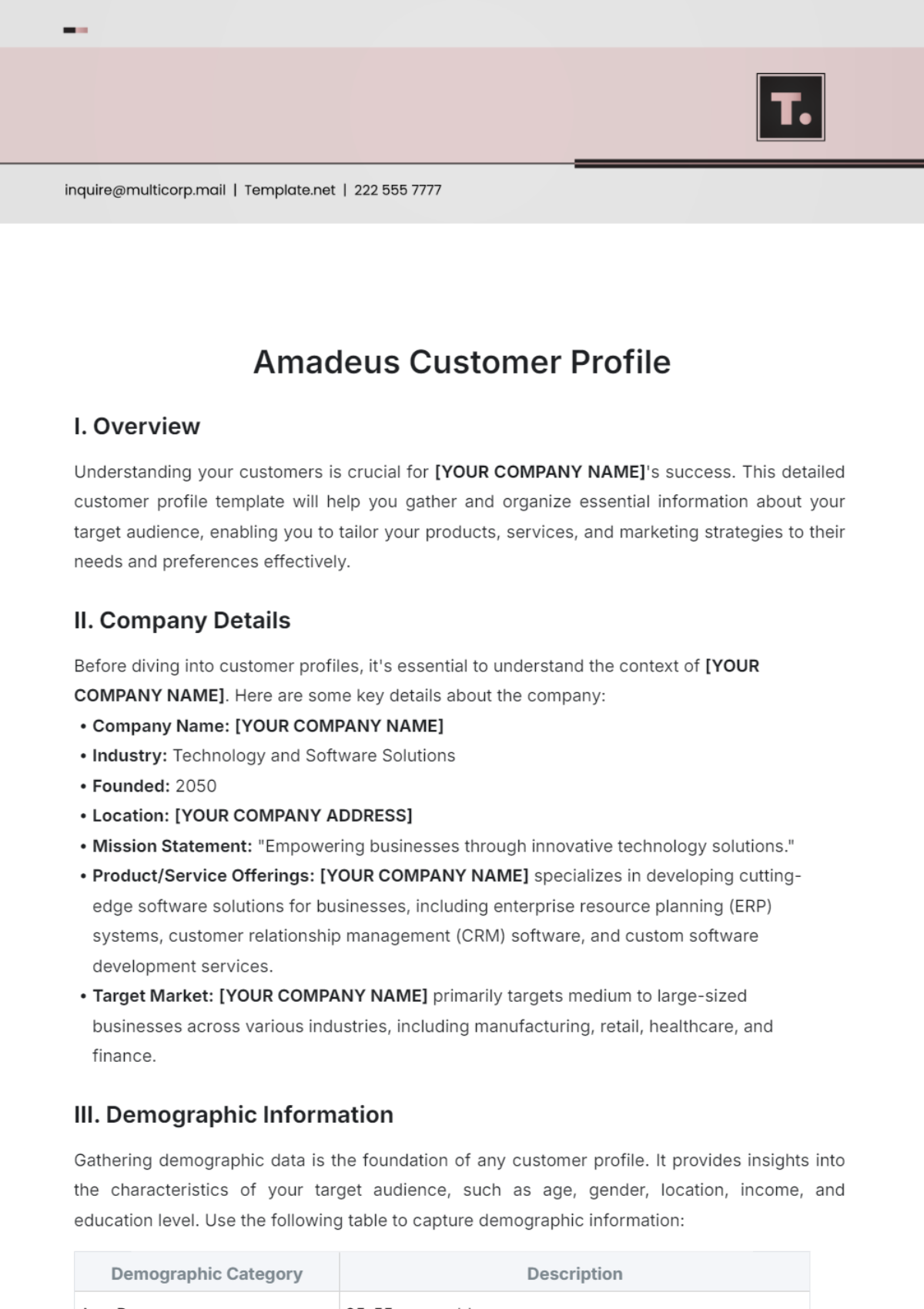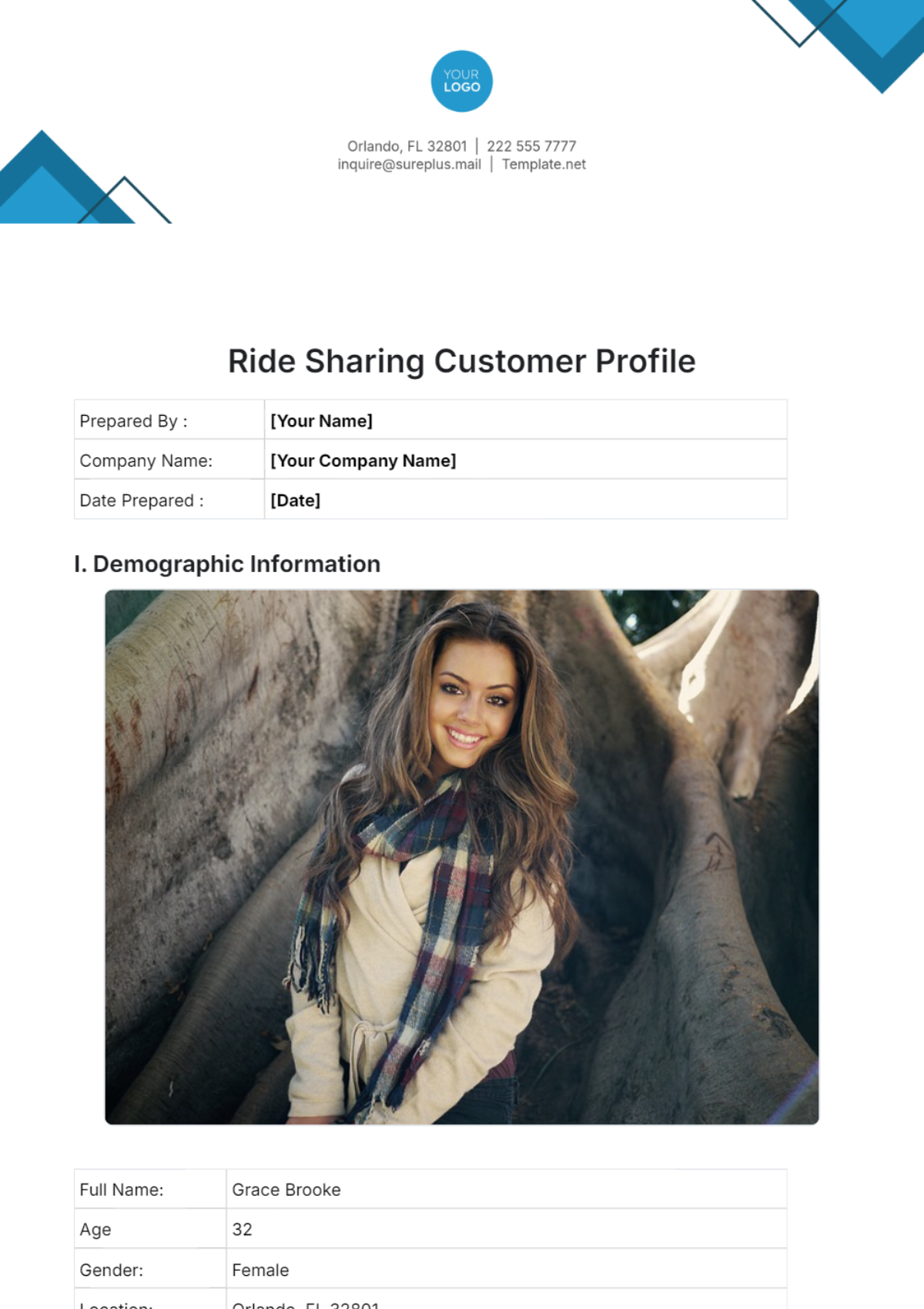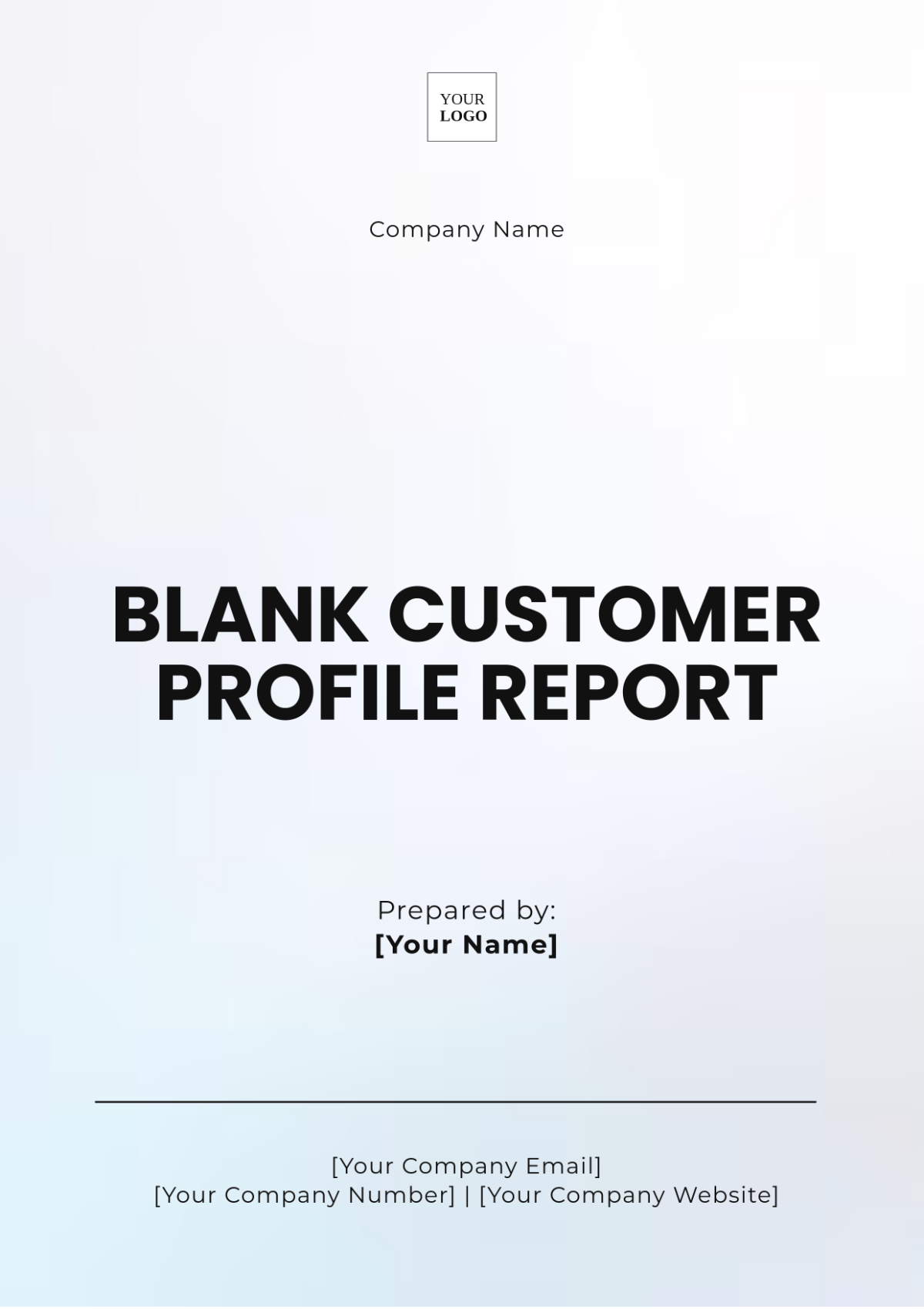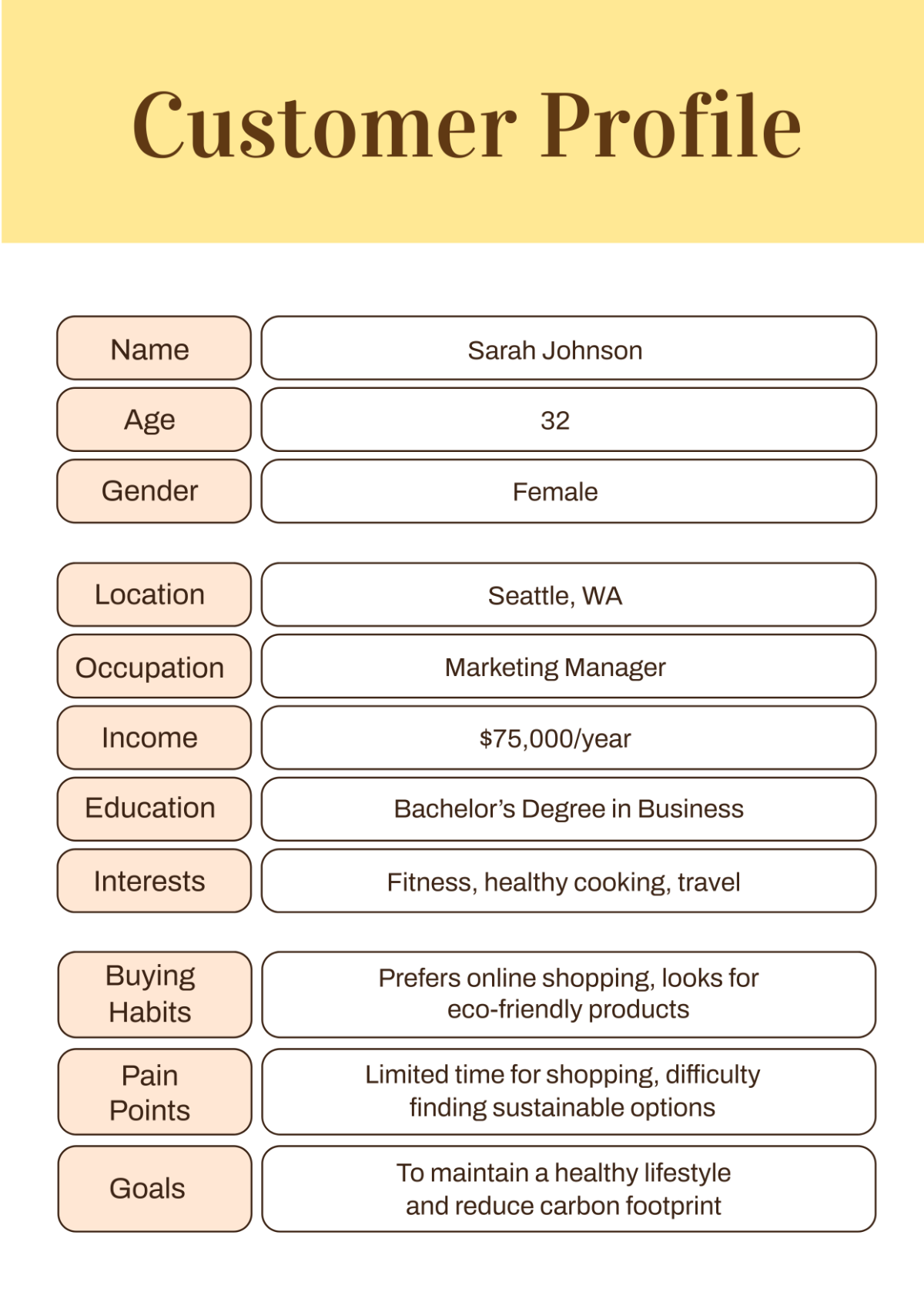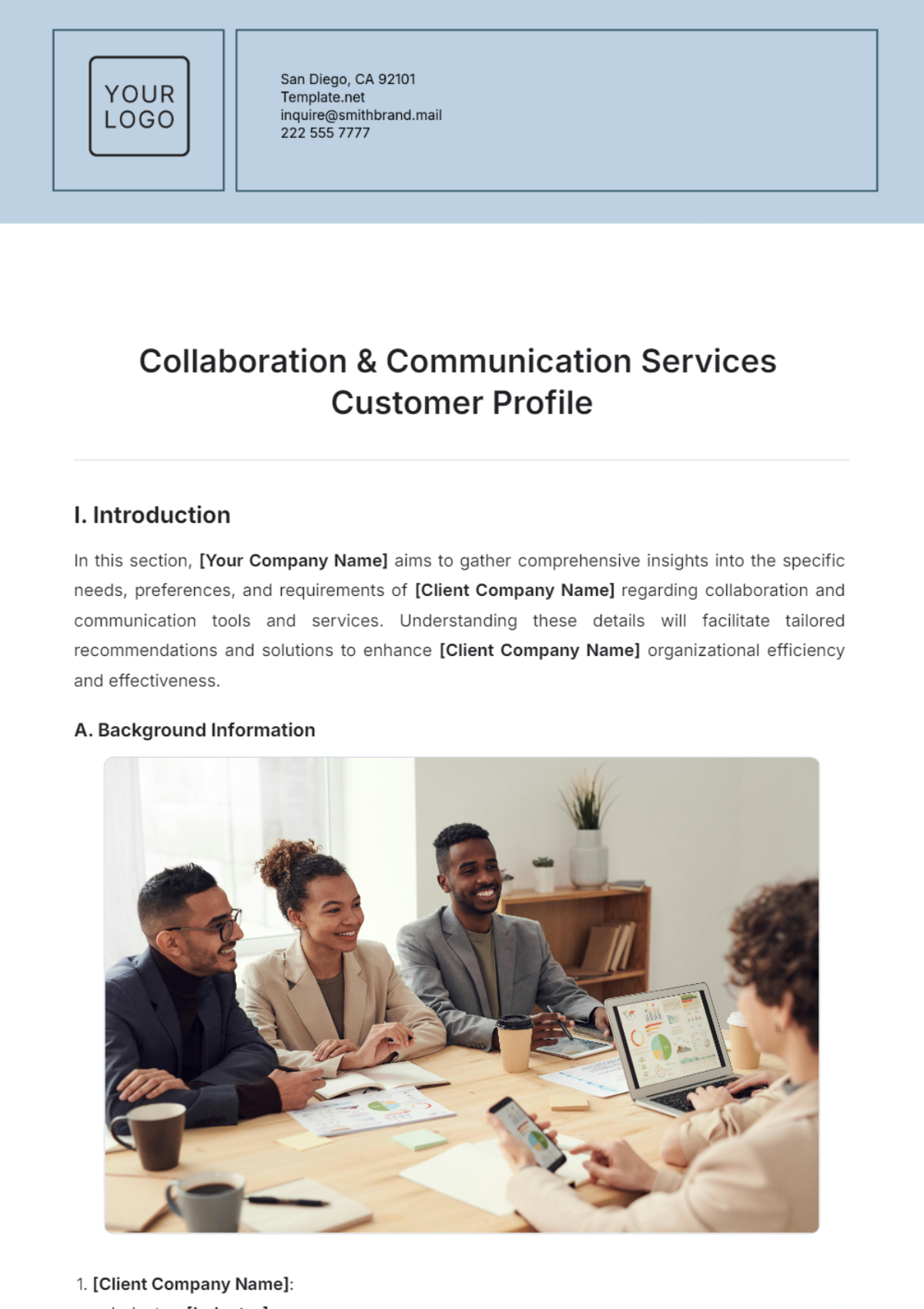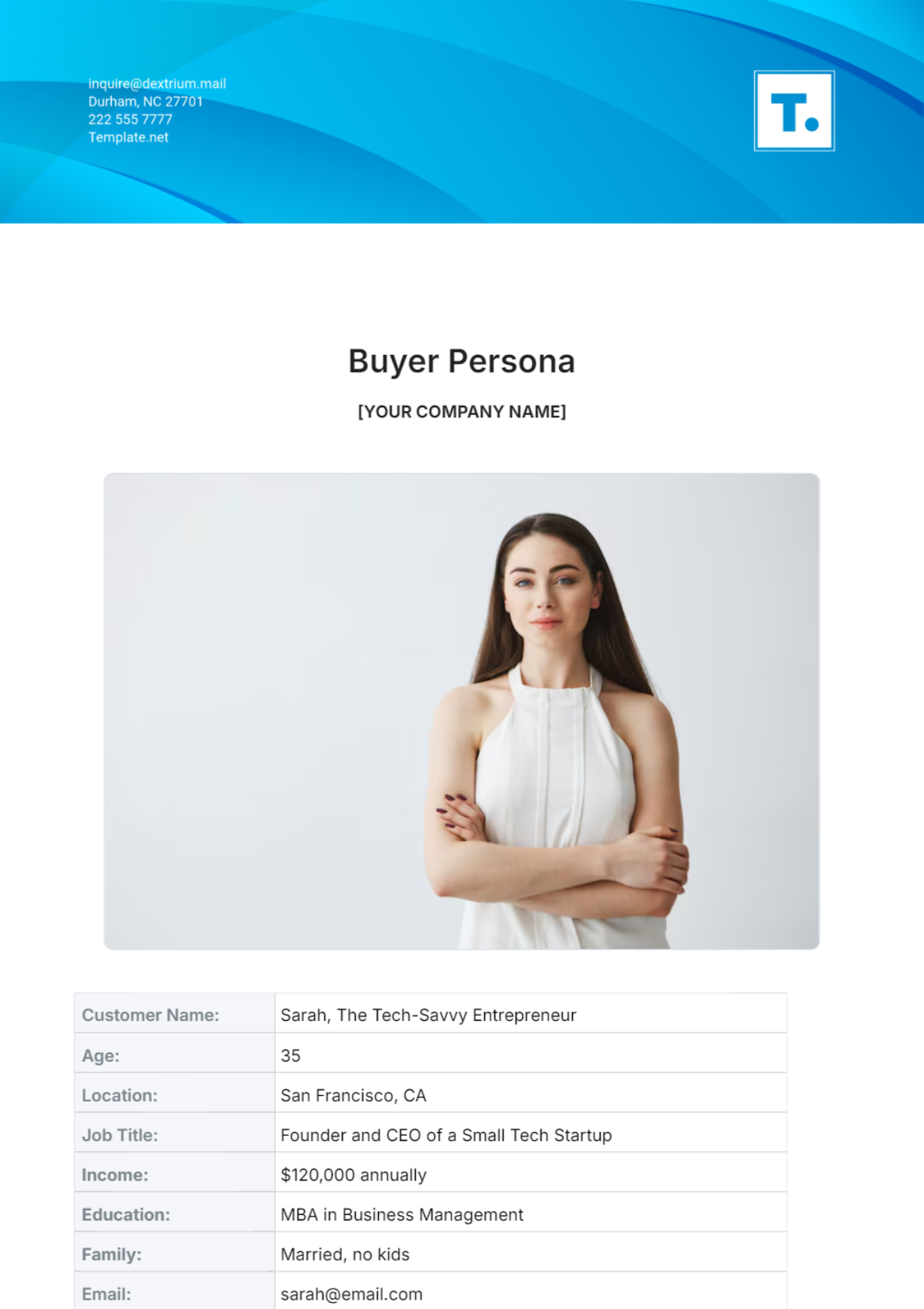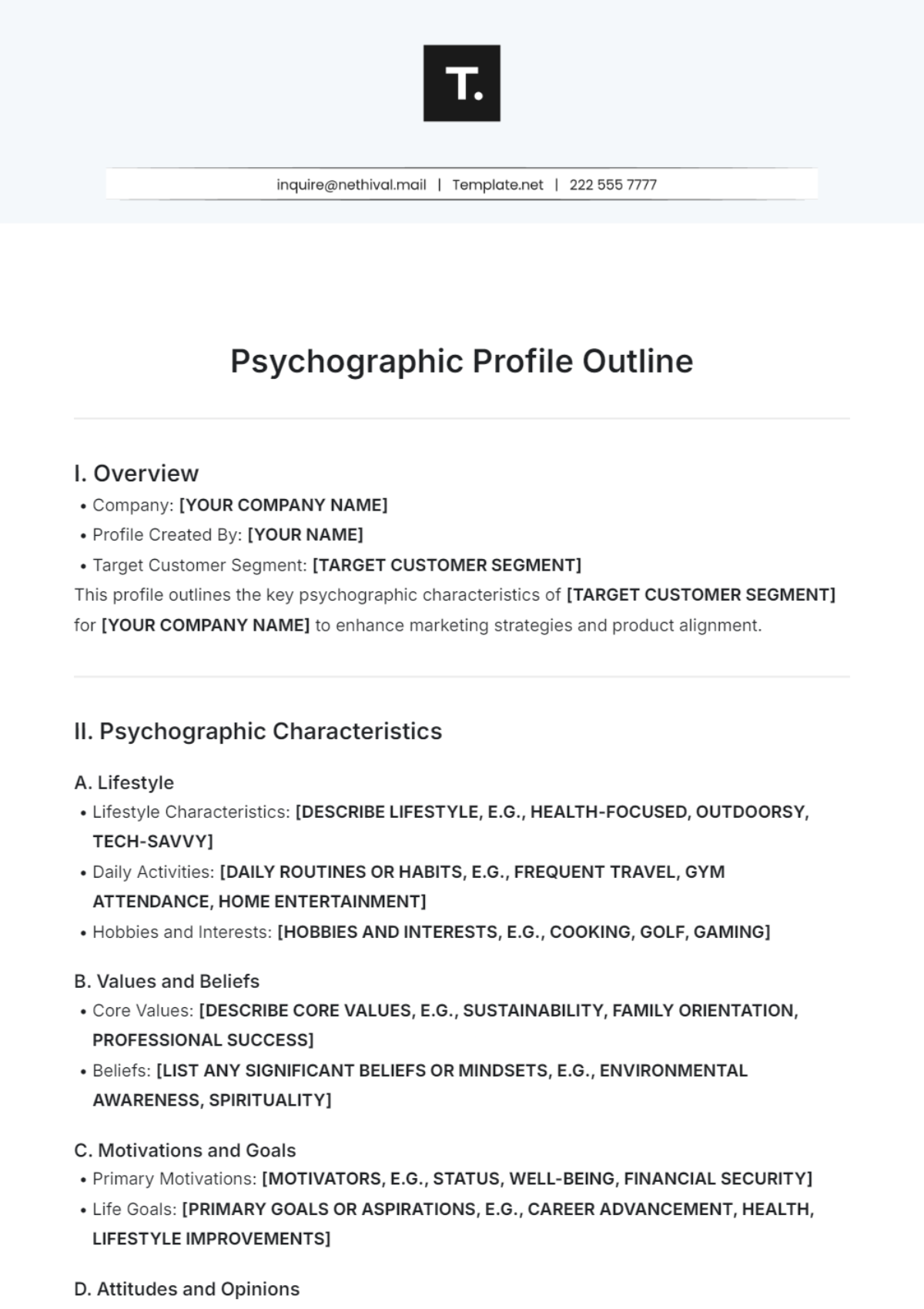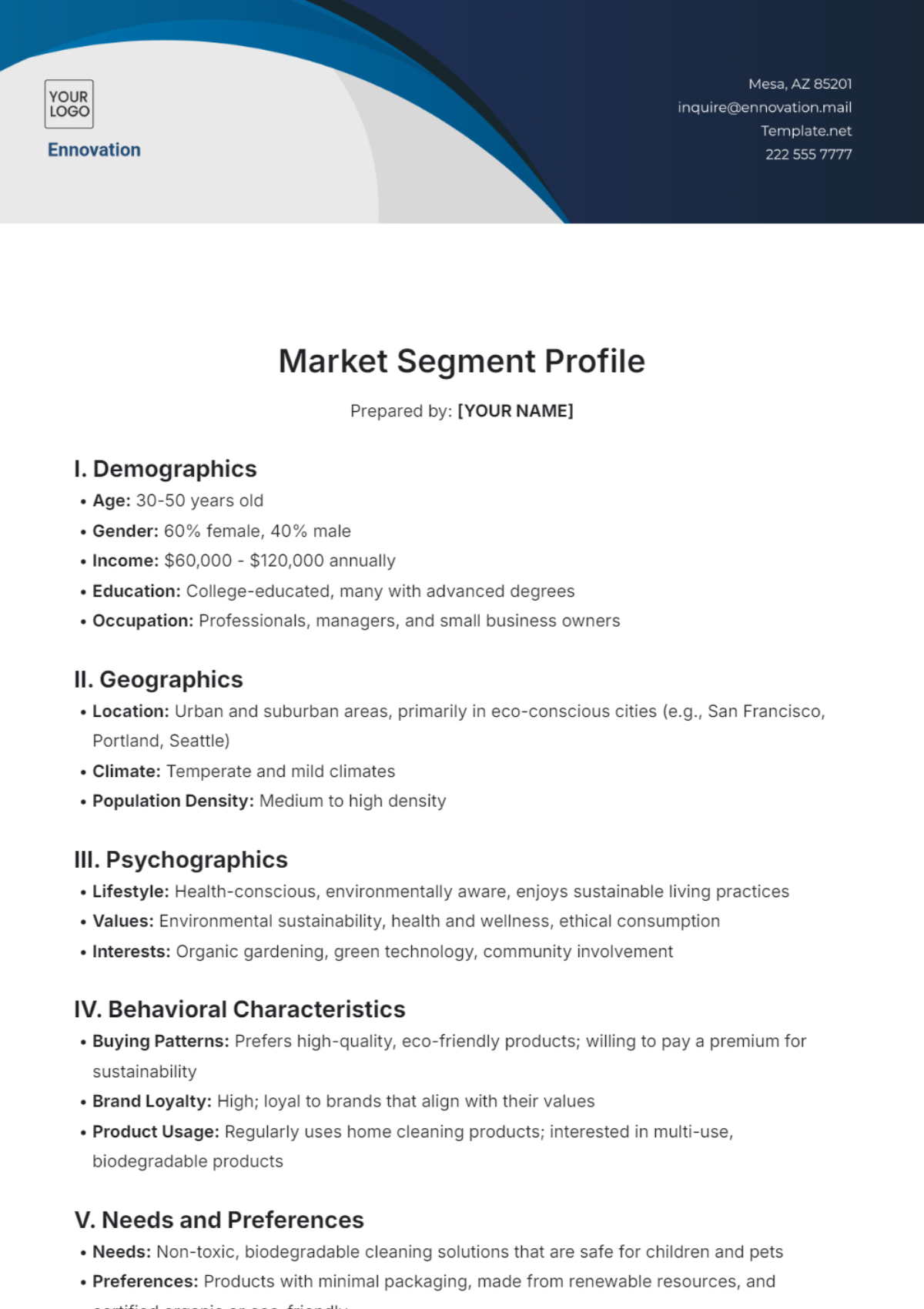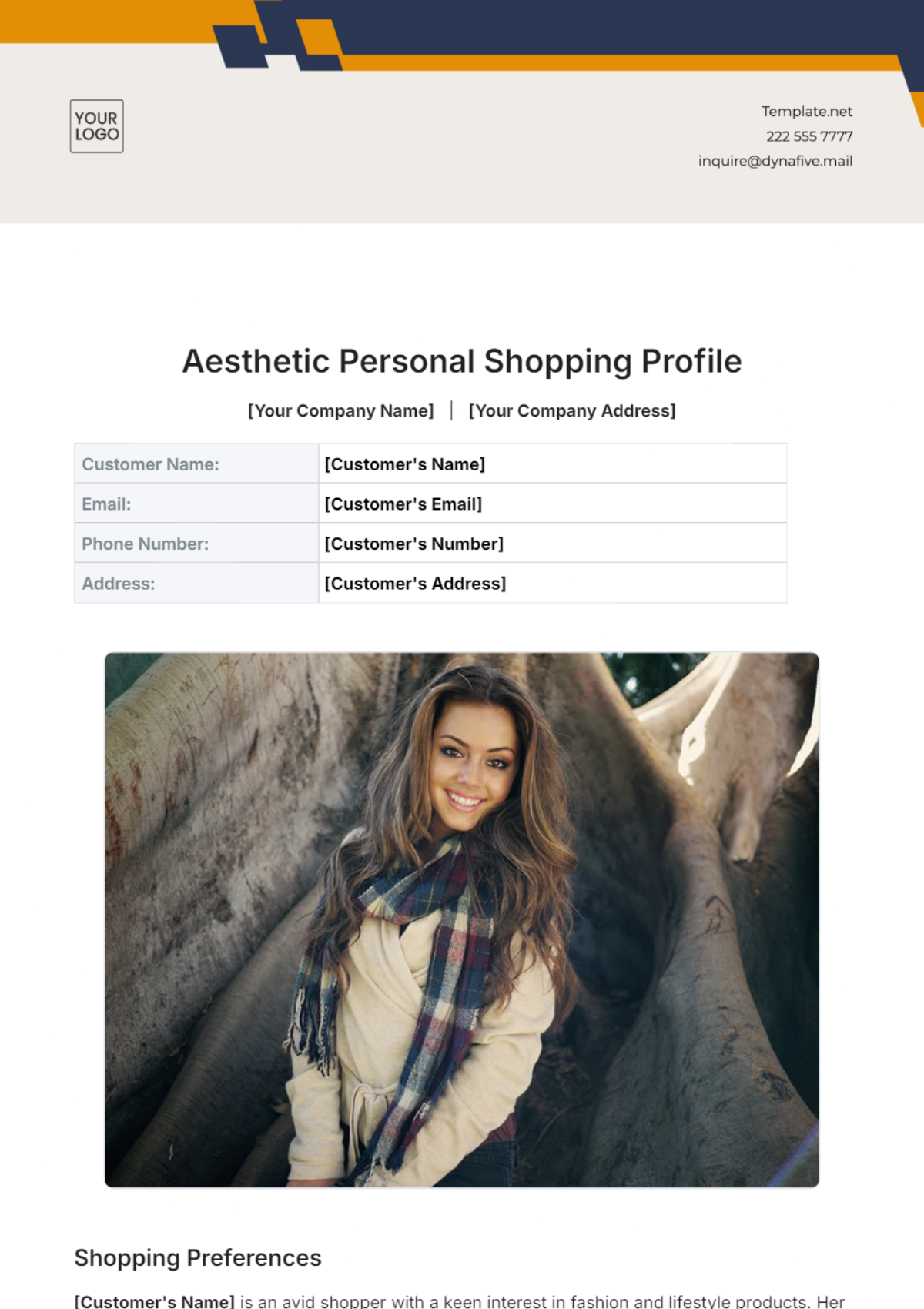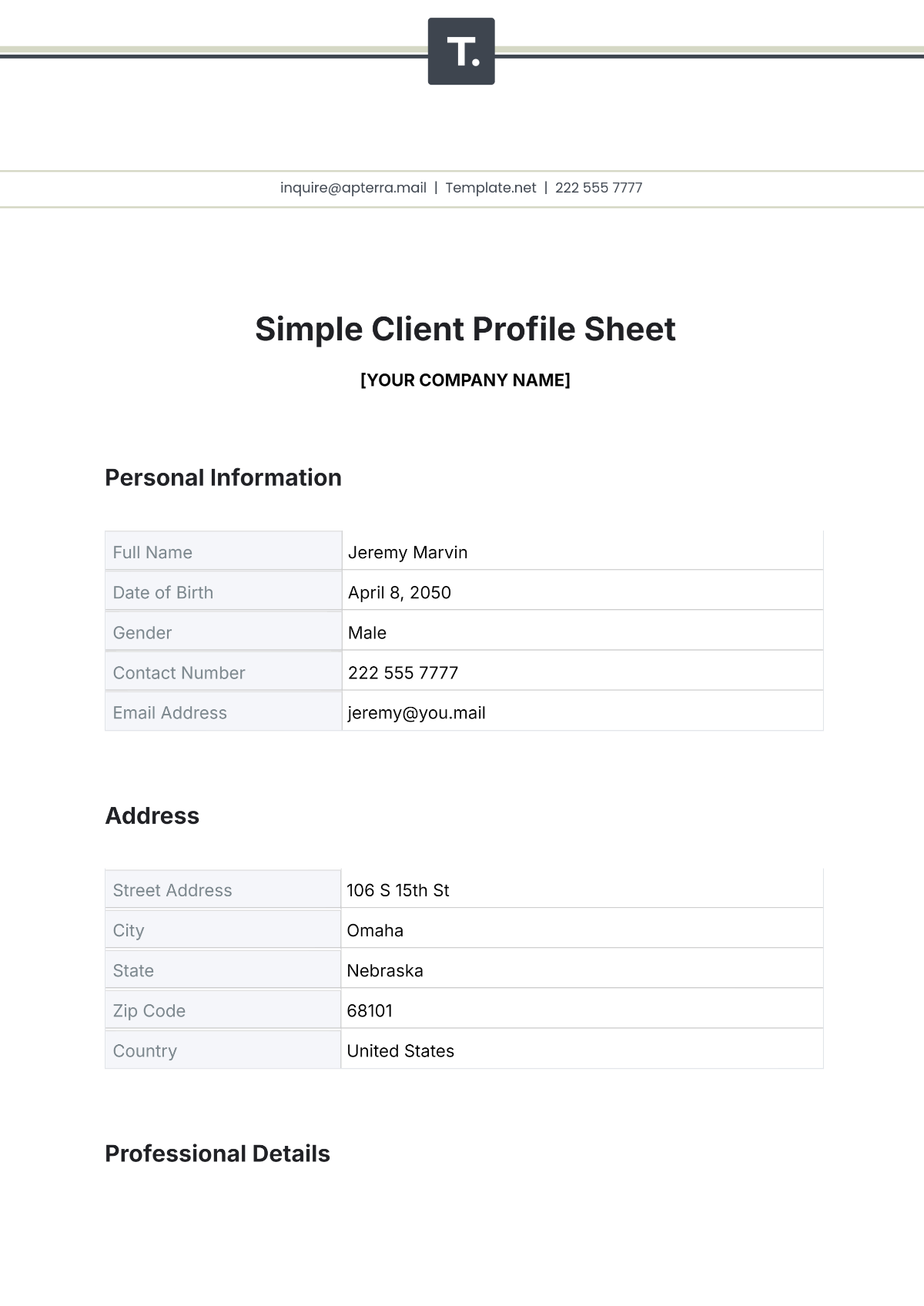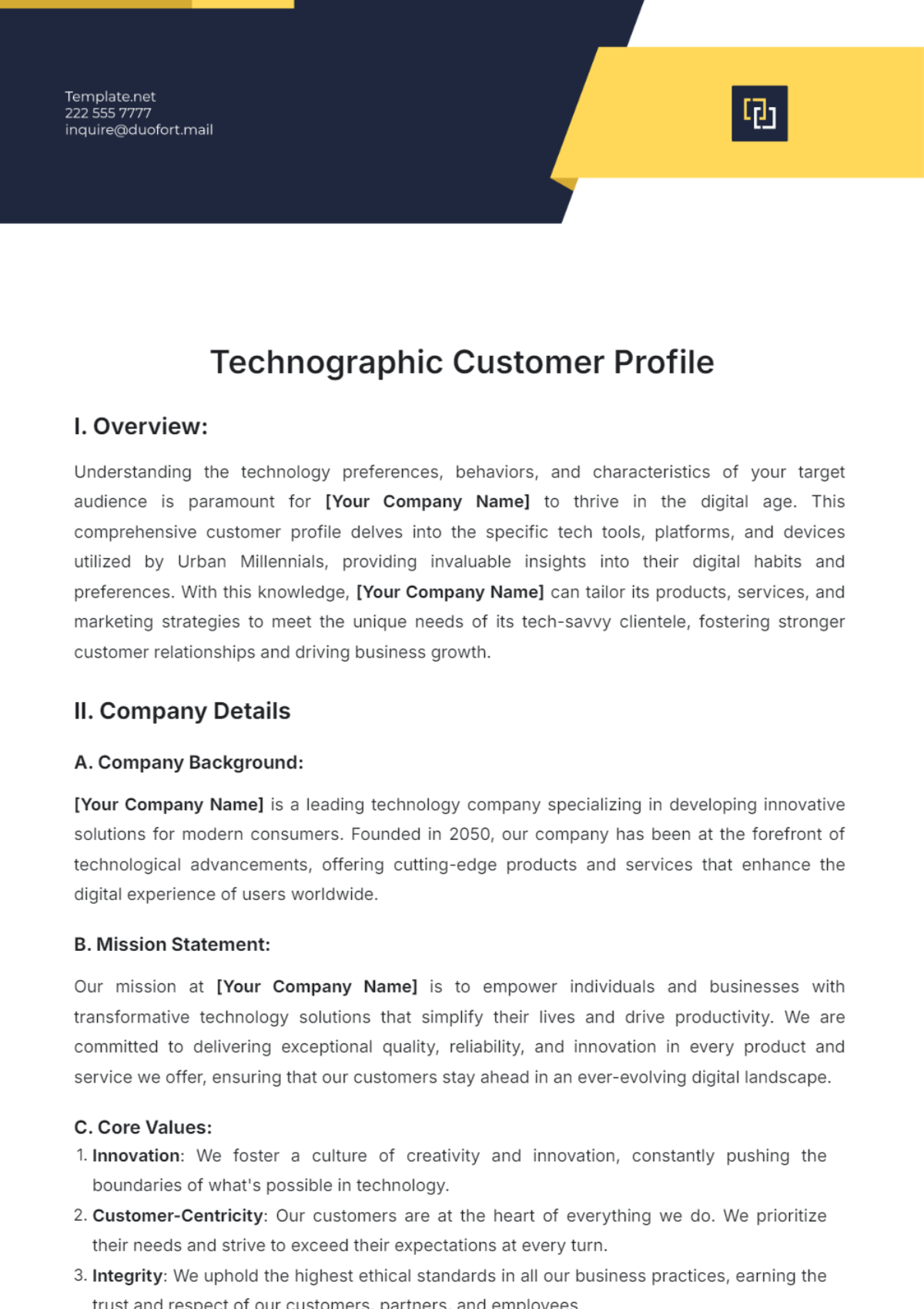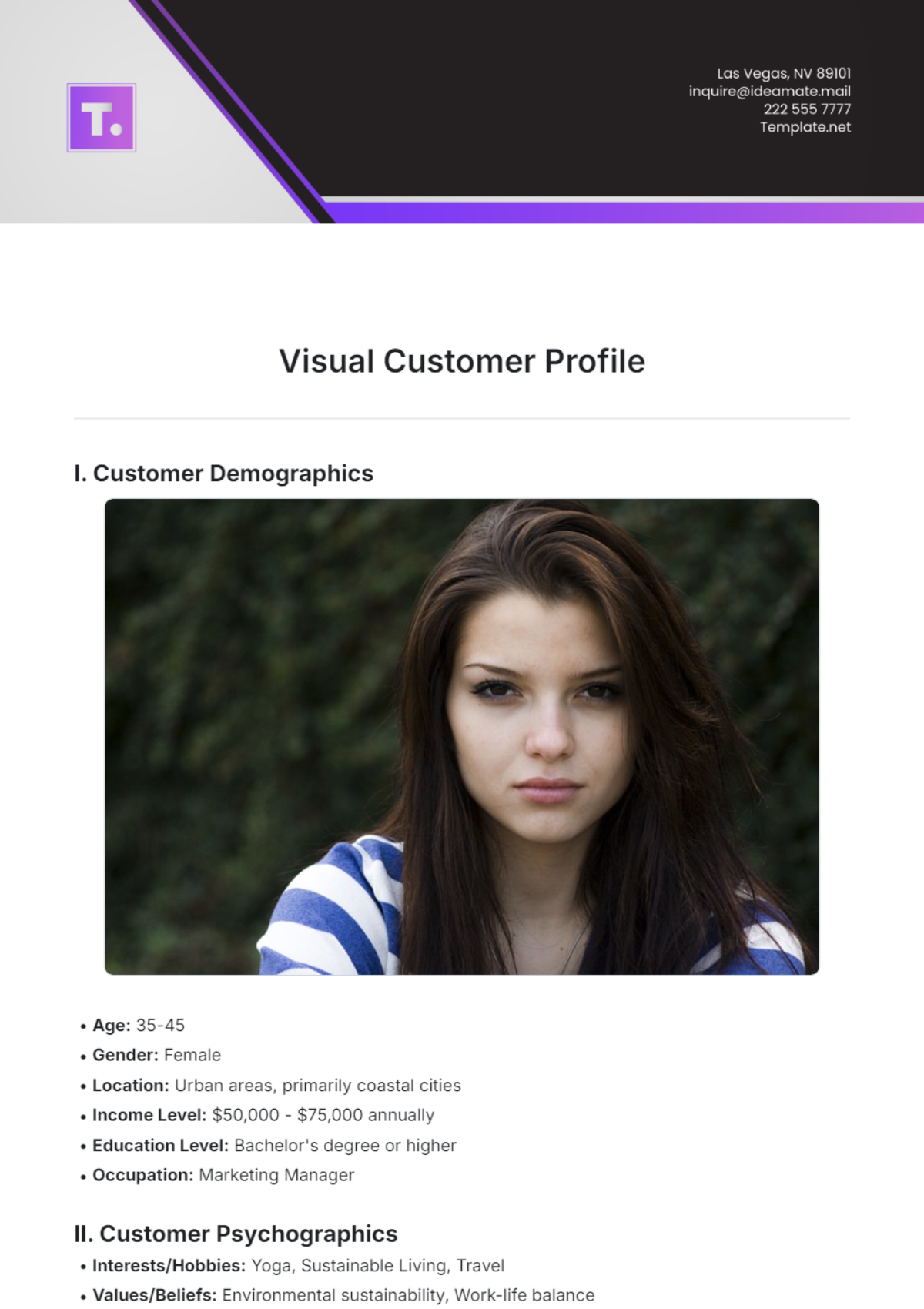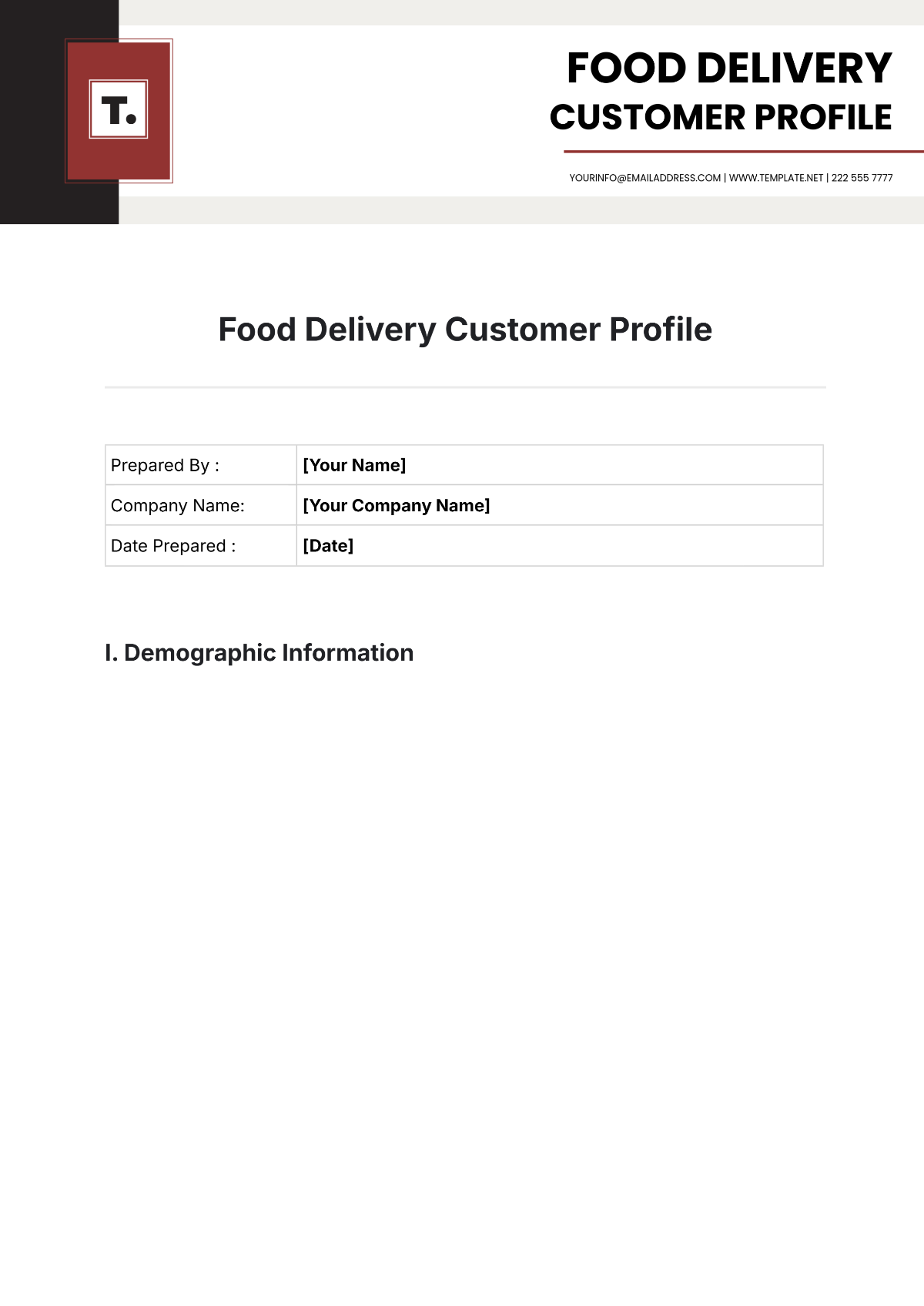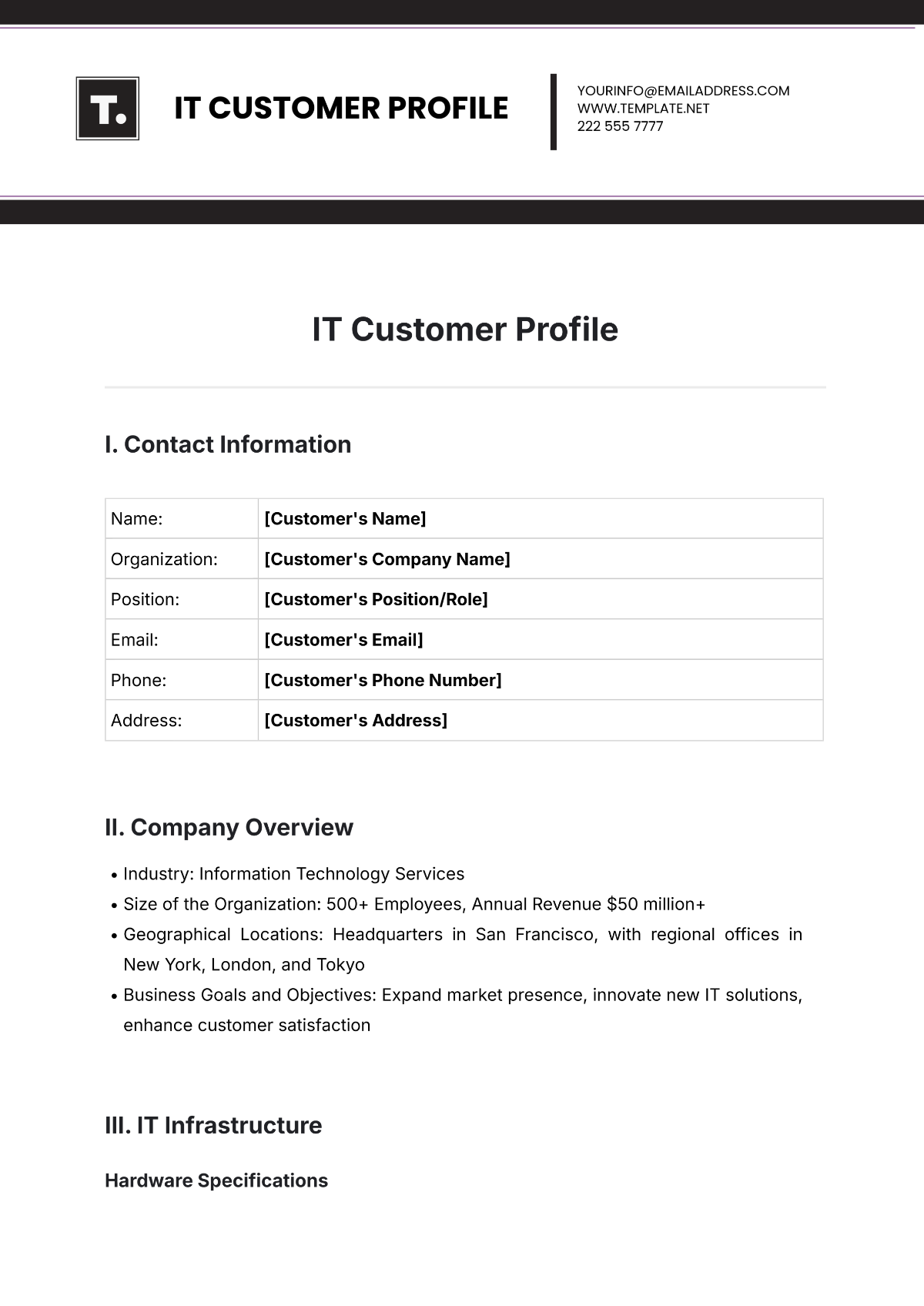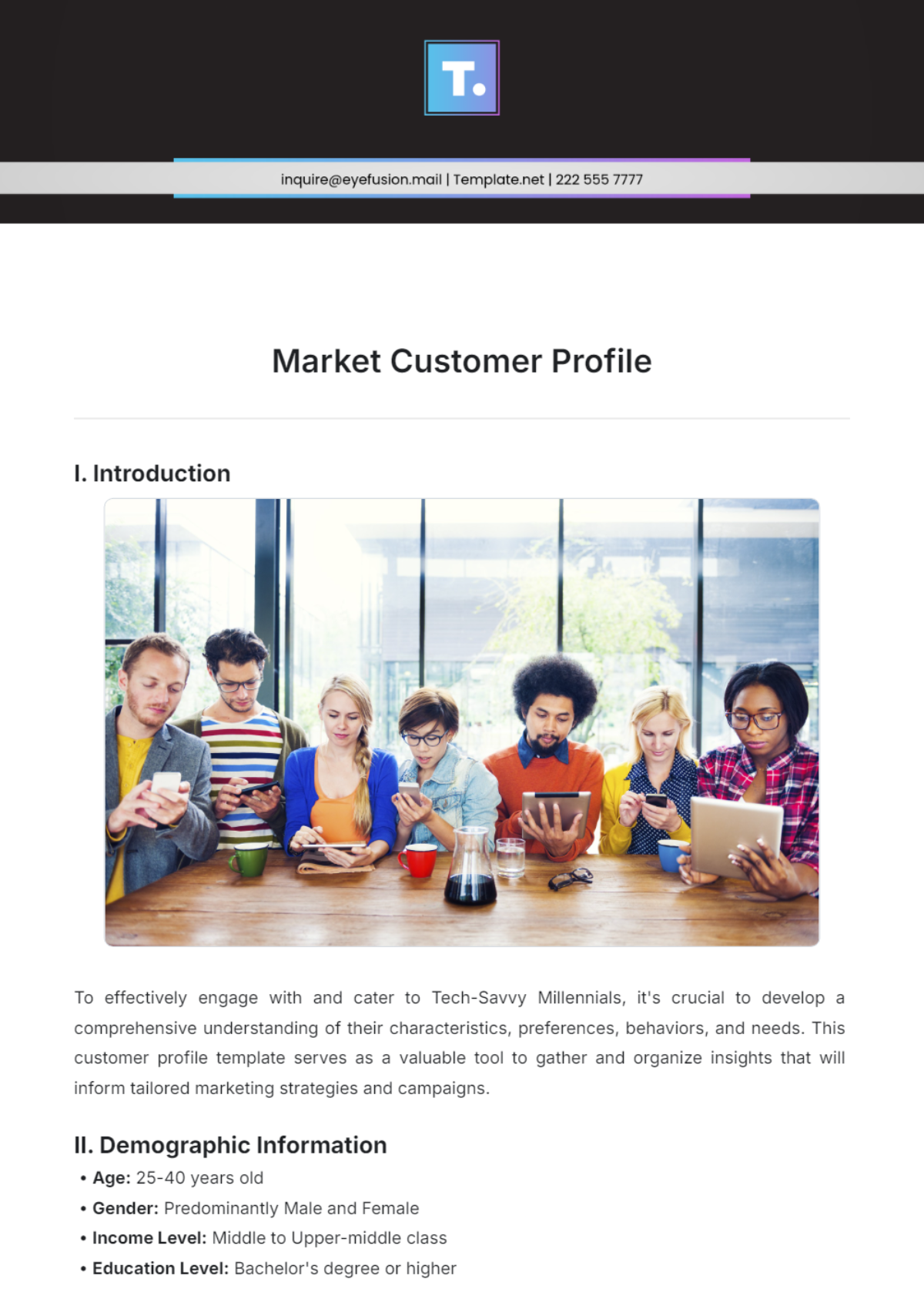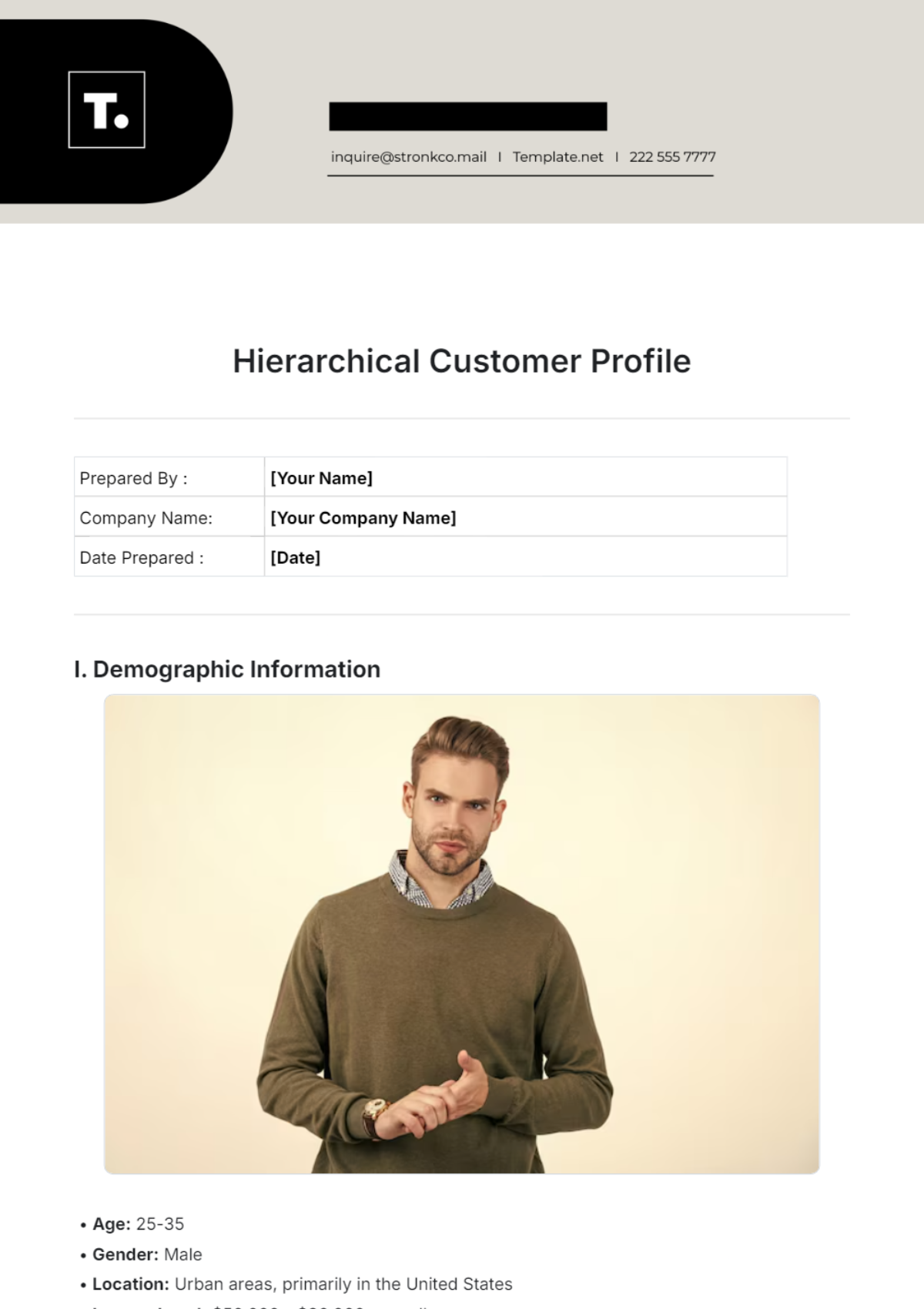Segmented Customer Profile
I. Overview of Customer Segments

Identify and understand the various customer segments at [YOUR COMPANY NAME], categorized by demographics, behaviors, and buying habits. This segmentation is key to developing targeted marketing strategies and personalized products that meet specific preferences and expectations, enhancing engagement and conversions.
II. Personal Information
Full Name: | [CUSTOMER'S FULL NAME] |
Date of Birth: | [CUSTOMER'S DATE OF BIRTH] |
Identification Number: | [CUSTOMER'S IDENTIFICATION NUMBER] |
Current Address: | [CUSTOMER'S CURRENT ADDRESS] |
Contact Information: | [CUSTOMER'S CONTACT INFORMATION] |
III. Demographic Information
Demographics, including age, gender, income, and education, are essential for designing targeted and relevant marketing campaigns for different customer segments.
For instance:
Age Range: 20-35 years – Typically tech-savvy and active on social media.
Gender: Male/Female/Other – Products are tailored according to the gender preferences observed.
Income Bracket: High-income earners – Prefer premium products and services.
IV. Psychographic Information
Psychographic factors, including lifestyle, values, interests, and attitudes, provide deep insights into why customers prefer certain products, enhancing their understanding of their choices.
Example psychographic profiles include:
Lifestyle: Environmentally conscious and prefers eco-friendly products.
Values: High value on family time, prefers products that enhance family bonding.
Interests: Keen interest in technology and innovation, often early adopters of new gadgets.
V. Behavioral Patterns
Analyzing behavioral patterns assists in forecasting purchase habits across customer segments, including buying frequency, brand loyalty, and the typical journey from awareness to decision.
Key behavior patterns include:
Purchase Frequency: Monthly – Loyal customers who prefer monthly subscriptions or routine product replenishment.
Brand Loyalty: High – Segments that are less price-sensitive and more focused on brand value.
Decision Influences: Social media influencers play a substantial role in the decision-making process for this segment.
VI. Preferences and Needs
Preferences and needs target the priorities and requirements of customer segments at [YOUR COMPANY NAME], aligning products and services with user expectations and market demand.
Examples include:
Product Preferences: High utility with a sleek design is preferred.
Service Needs: 24/7 customer support and extensive after-sales service.
Price Sensitivity: Moderately sensitive, looking for the best value-for-money propositions.
VII. Conclusion
To remain competitive, it's imperative that [YOUR COMPANY NAME] continuously updates and refines these customer profiles. Such efforts ensure marketing strategies and product developments are keenly aligned with evolving customer expectations and market trends.
The customer data should be reviewed quarterly to incorporate changes in consumer behavior and market conditions, ensuring that [YOUR COMPANY NAME] remains adaptive and responsive to its valuable customer base.
Company Name: | [YOUR COMPANY NAME] |
Prepared By: | [YOUR NAME] |
Email: | [YOUR EMAIL] |
Date Prepared: | [DATE] |






